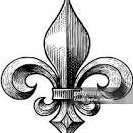Germany's Merkel drums up colourful support in campaign speech
-
Recently Browsing 0 members
- No registered users viewing this page.
-
Topics
-
-
Popular Contributors
-
-
Latest posts...
-
303
Road Rage (Foreigner Style)
I need you like I need dual ass*oles. You aren't going to convince anyone here that's not another unstable individual that I'm what I'm not. I don't need to try and fool anyone, because anyone who hasn't their head stuck in the sand knows what I am by my words. Again you're trying to convince another of your innocence here, this after either calling them an idiot, like you did the OP, or trying to get them on your side after insulting them another way, thinking they might have forgotten what you said earlier. You really have a very disturbed way of thinking, and the problem of that is, there isn't any help you can receive, as this is a learned behavior from your childhood. -
0
Report DSWD Ensures Readiness with Relief Packs for Typhoon
File photo for reference only As the looming typhoon threatens the Philippines, the Disaster Response Management Group (DRMG) of the Department of Social Welfare and Development (DSWD) reassures the public that ample relief resources are poised for distribution to affected areas. In a statement shared via Facebook on Tuesday, 26th August, the DSWD confirmed that sufficient Family Food Packs (FFP) are meticulously prepared in warehouses nationwide, ready to be deployed at a moment’s notice. “Our agency remains steadfast in its preparedness. There’s no need for our citizens to worry as we have adequate family food packs prepositioned in all our warehouses across the country,” stated DRMG Assistant Secretary Irene Dumlao. Dumlao elaborated that the agency maintains 3 million prepositioned FFPs, aligning with the President’s directive to ensure no one goes hungry during calamities. This equates to approximately 90 million Thai Baht earmarked for immediate aid and response. Additionally, Dumlao highlighted that DSWD Field Offices are on high alert and maintain constant coordination with Local Government Units (LGUs) in potentially affected regions such as the National Capital Region (NCR), Central Luzon, CALABARZON, the Bicol Region, and Eastern Visayas. To further bolster relief efforts, mobile kitchens and command centres are ready for deployment to evacuation centres managed by LGUs, ensuring swift response and support to those in need. The proactive measures confirm the DSWD’s commitment to mitigating the impact of the upcoming typhoon, aiming to provide necessary assistance promptly and efficiently. Adapted by ASEAN Now from Balita 2025-08-26 -
303
-
43
Tattoos.
>Mind your own business.>, Can be used when a comment, suggestion, or opinion is directly addressed to individual in question... But this is a general comment, suggested to generate a discussion, and obtain opinions... So clearly not directed to you, so... Unless you are suggesting to shut down AseanNow.... -
28
-
303
Road Rage (Foreigner Style)
With whom am I disagreeing @fredwiggy? Who are the quite a few? I have no problem with @nauseus They do not even register on my radar. Perhaps they have a bee in their bonnet about something, but it doesn't concern me in the slightest. So who are these "quite a few"? It's only the misfits, @fredwiggy No one normal/balanced. Most here agree with me. They are just irked by my dialogue with you.
-
-
Popular in The Pub



.thumb.jpg.d9f3e54432a0ae65f4d5beb0d2d122ce.jpg)






Recommended Posts
Create an account or sign in to comment
You need to be a member in order to leave a comment
Create an account
Sign up for a new account in our community. It's easy!
Register a new accountSign in
Already have an account? Sign in here.
Sign In Now